Tay Nguyen, the Central Highlands, is not only renowned for its culture of gongs and epics that the inhabitants tell by the fireside, but also for its wooden statues that are as rustic and simple as the people of this region.
The sculpturing of statues is an ancestral art which occupies an important place in the spiritual life of the ethnic minority groups residing in Tay Nguyen.
According to custom, after a funeral, the family builds a small funerary house on the tomb of the deceased to protect it from rain and the sun. Inside are deposited objects owned by the deceased.
After one, two or three years, the family will destroy this house to build another, larger one surrounded by a fence and decorated outside with wooden statues. These represent human forms, animals, or the activities of everyday life.
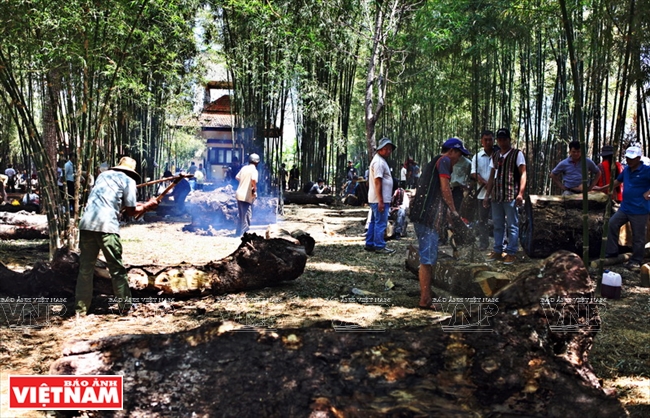
Trunks of various sizes from which statues will be carved. Photo: Cong Dat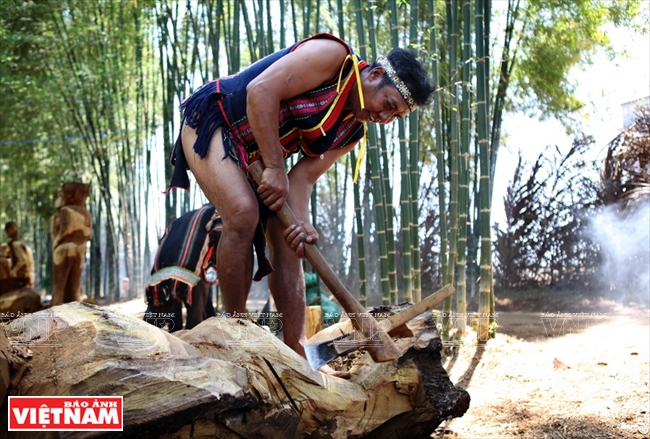
Rudimentary tools for carving statues are an axe and a chisel. Photo: Cong Dat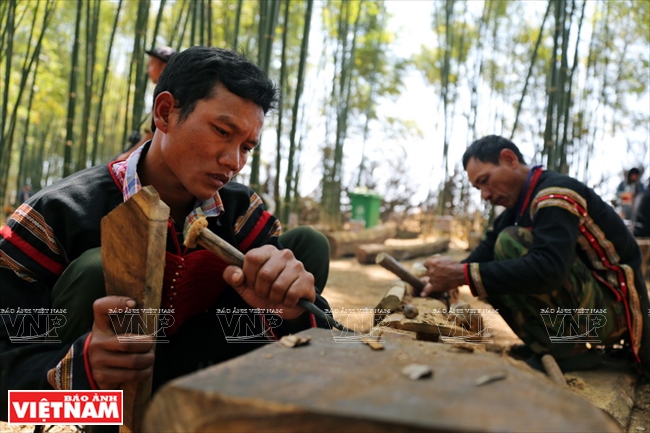
The know-how of the sculptors of Tay Nguyen is even more ingenious today. Photo: Khanh Long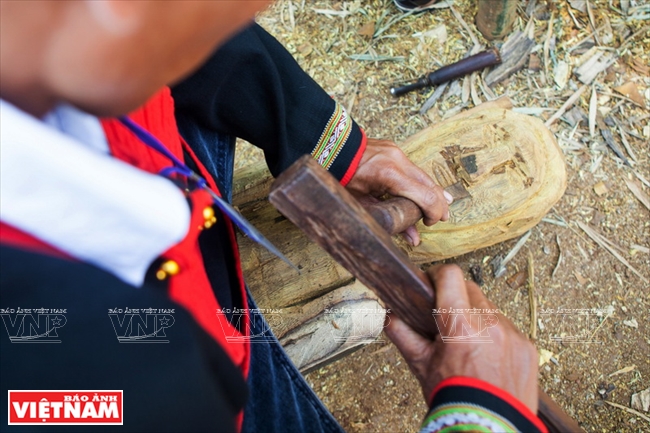
Under the skilled hands of artisans ... .. Photo: Le Minh

... Wooden statues take shape. Photo: Le Minh
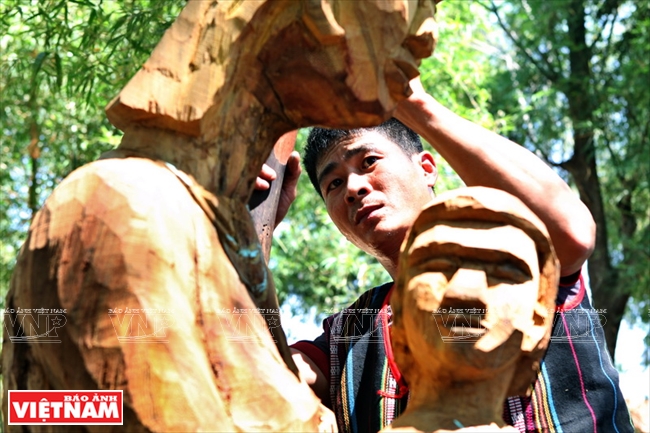
Craftsman Vu Van Duc takes care of every detail. Photo: Cong Dat
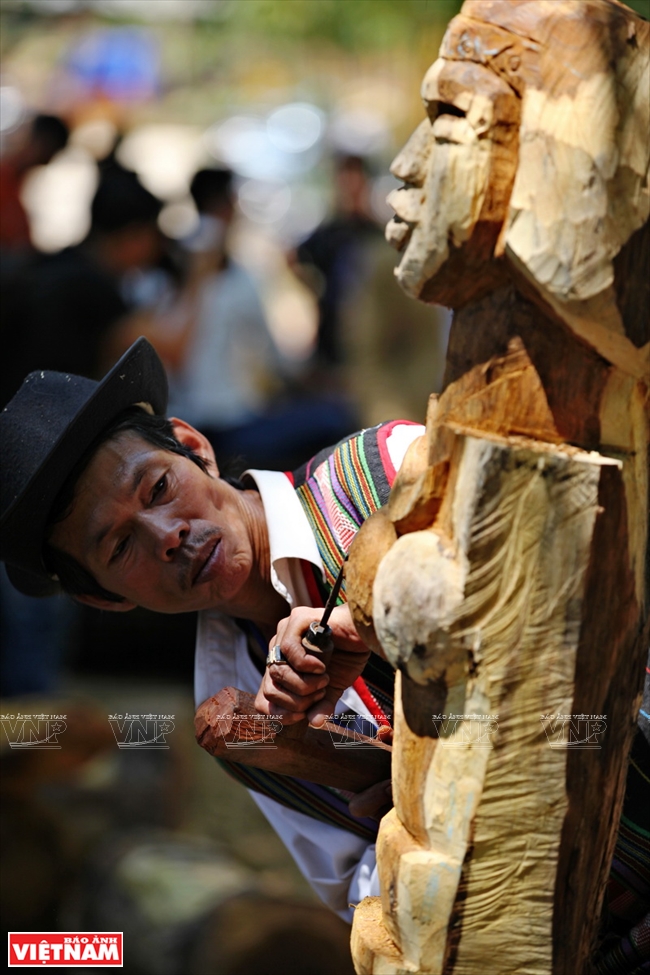
The craftsman at work. Photo: Cong Dat
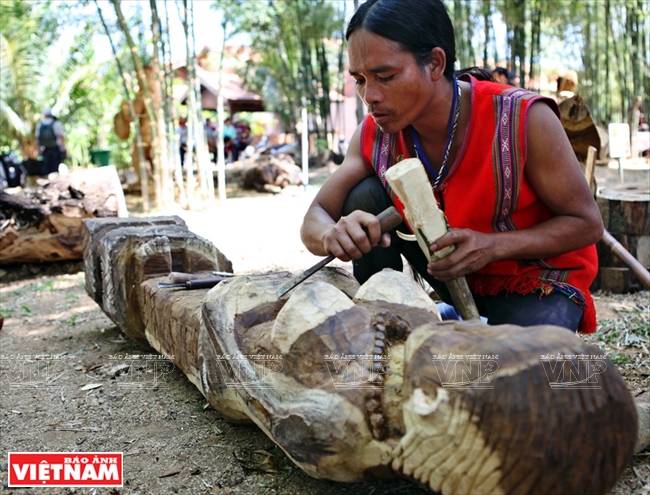
The sculptor K'Sa and his work "Maternity". Photo: Cong Dat
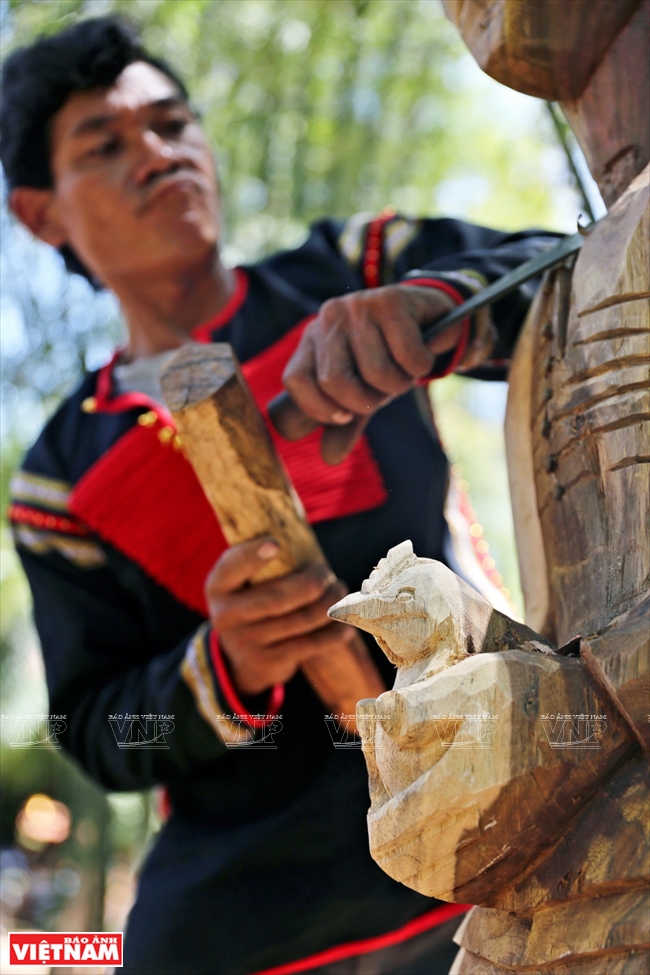
The sculptor Y Thai Eban, from the city of Buon Ma Thuot, gives the last touches to his statue
"Thay cung" (Sorcerer). Photo: Khanh Long |
With their skilled hands, artisans have transformed a tree trunk into a statue, drawing on their imagination in the culture and traditional beliefs of their land.
Wooden statues can represent humans or animals, scenes of work or everyday life such as women grinding rice, men hunting, faces radiant with joy, people playing musical instruments, dancing or drinking alcohol. They will be the companions of the deceased in the hereafter.
Each sculptor has a specific, favourite theme. One prefers animals and nature, the other like family life, conjugal love or motherhood. The image of woman is recurrent as females play the central role in everyday life.
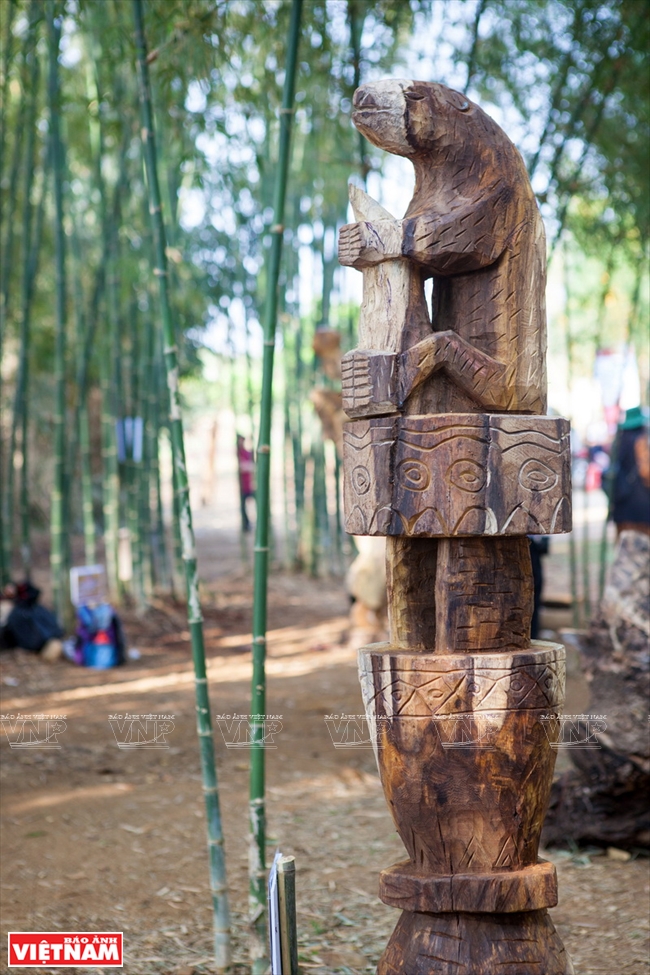
Statue from the artisan Y AnB'Ja, who won first prize at the contest of sculpture of statues of wood in Tay Nguyen,
organised this year by the province of Dak Lak. Photo: Le Minh
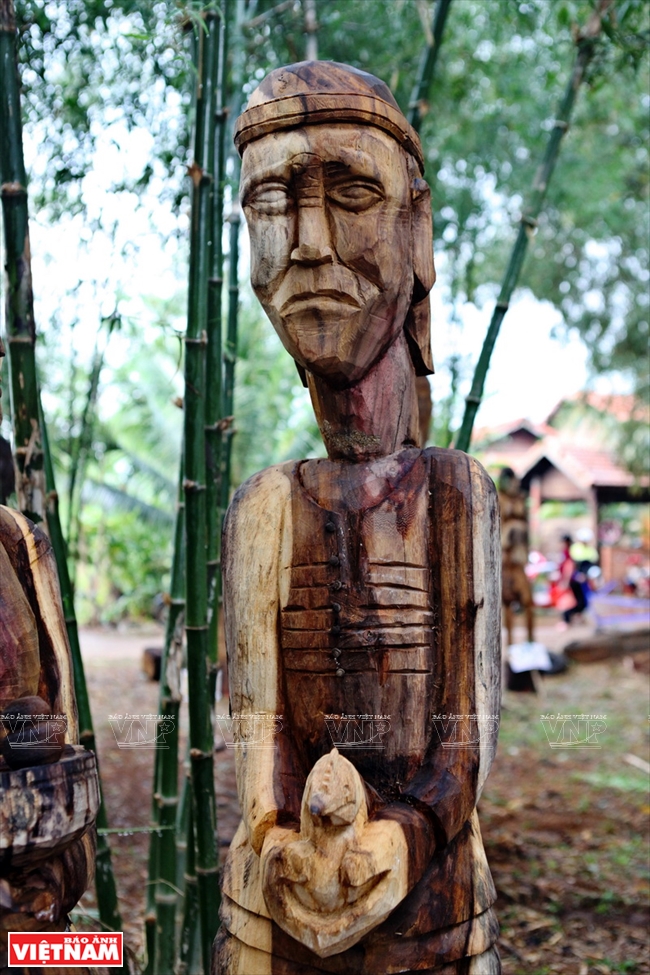
Statue "Thay cung" (Sorcerer) of artisan Y Thai Eban, who won first prize at the sculpture contest of statues of
wood in Tay Nguyen, organised this year by the province of Dak Lac. Photo: Khanh Long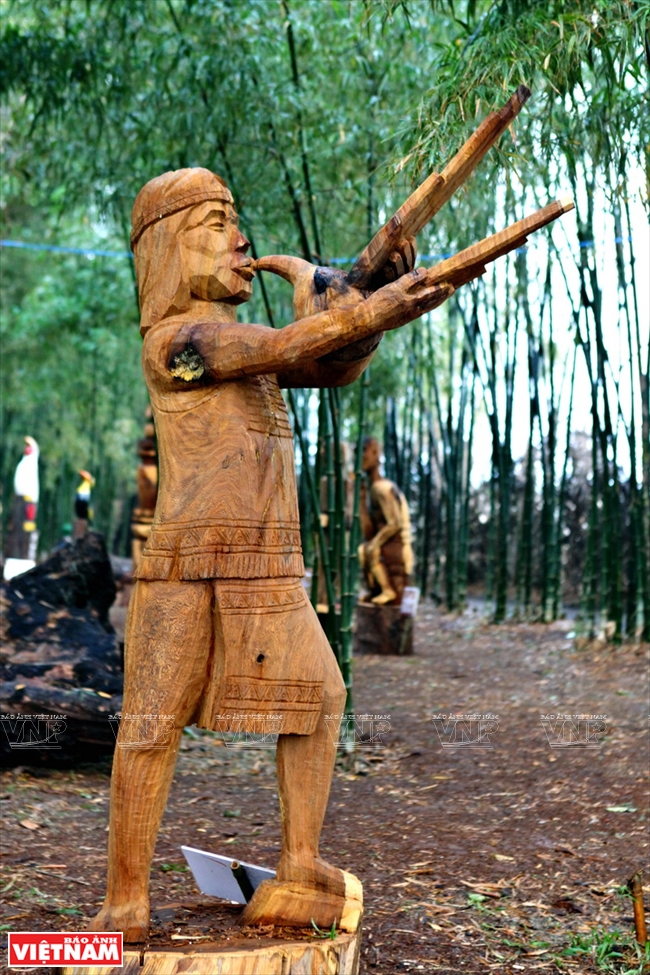
The sculpture "Melody of Ding Nam" by the craftsman Truong Duc Quang, Dak Lak province. Photo: Cong Dat
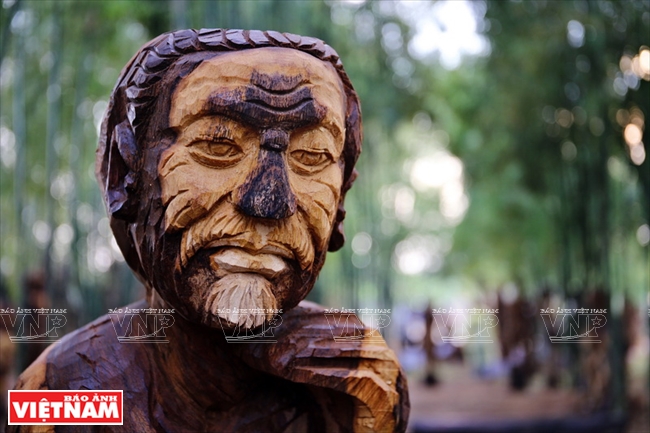
The facial features of a hand-made statue. Photo: Cong Dat
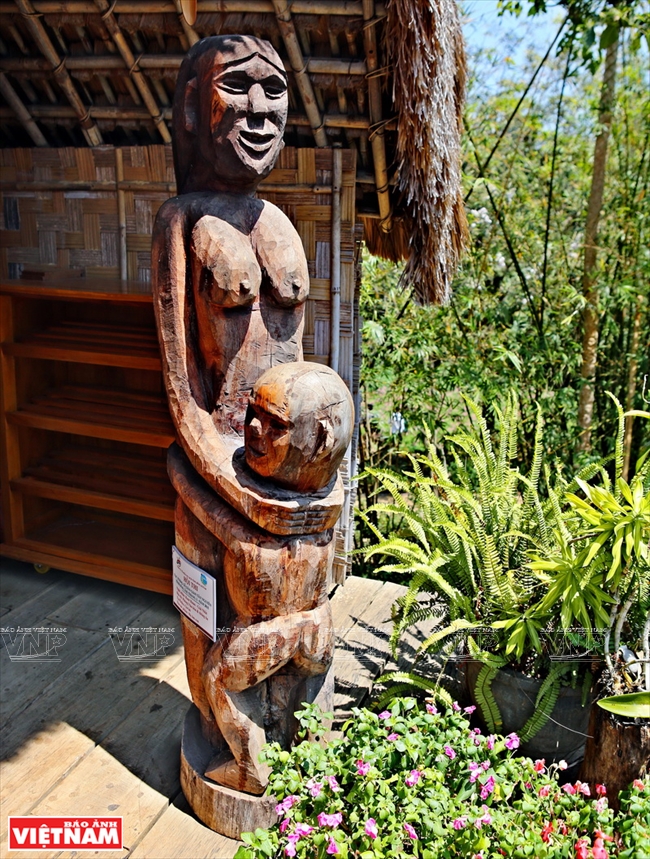
Sculptures valuing the cult of fertility. Photo: Cong Dat
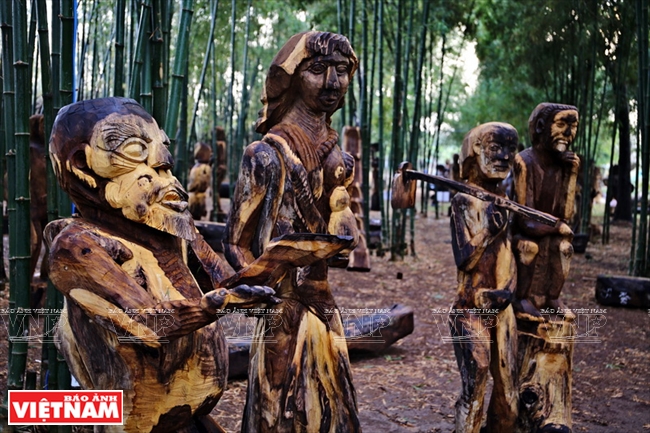
Statuettes of wood installed in a garden of statues in the tourist village of Ko Tam, Town of Buon Ma Thuot. Photo: Cong Dat
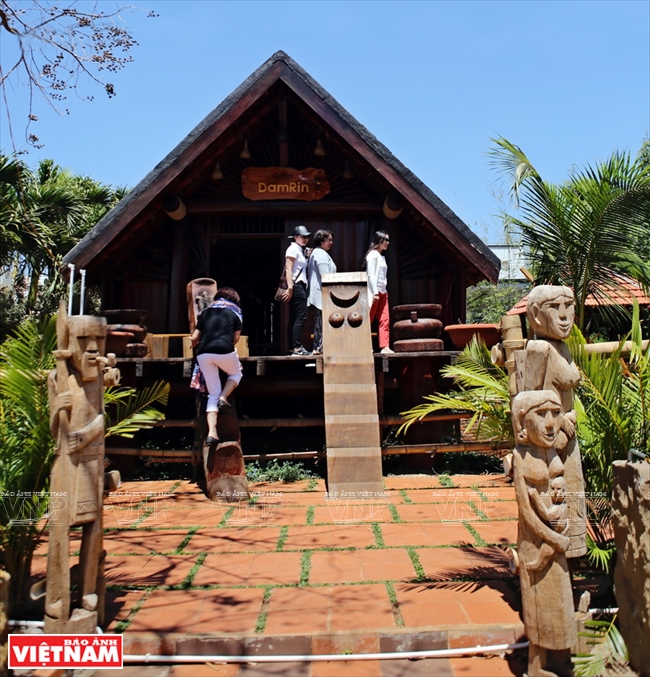
Statuettes used as decoration in a long house in Tay Nguyen. Photo: Cong Dat |
"Maternity is a noble blessing for all Vietnamese. It was maternal love that inspired me to sculpt statues to offer to mothers from Vietnam and abroad who have the great ability of bringing children into the world," said K'Sa, an artisan from the province of Dak Nong.
For this reason, the rustic statues of the funerary houses are truly emblematic of the minority communities of the Central Highlands and their culture./.
For the Tay Nguyen populations, death is not an end, but rather a return to the forest where man was born. To prepare for the life of the deceased in the other world, they decorate the funerary house ò the deceased with statues representing men, animals, food, clothing and consumer goods.
|
By Le Minh, Cong Dat & Khanh Long